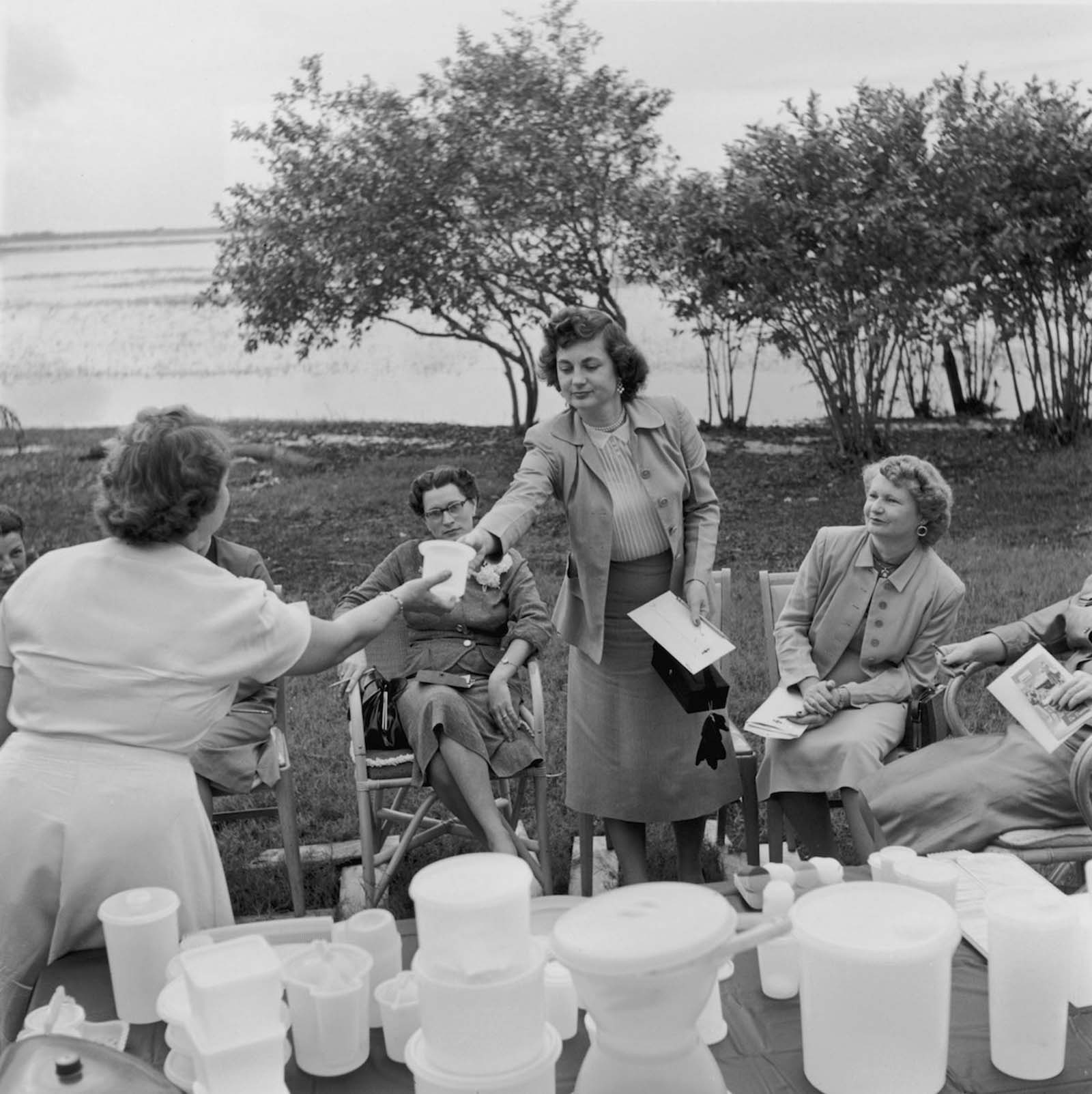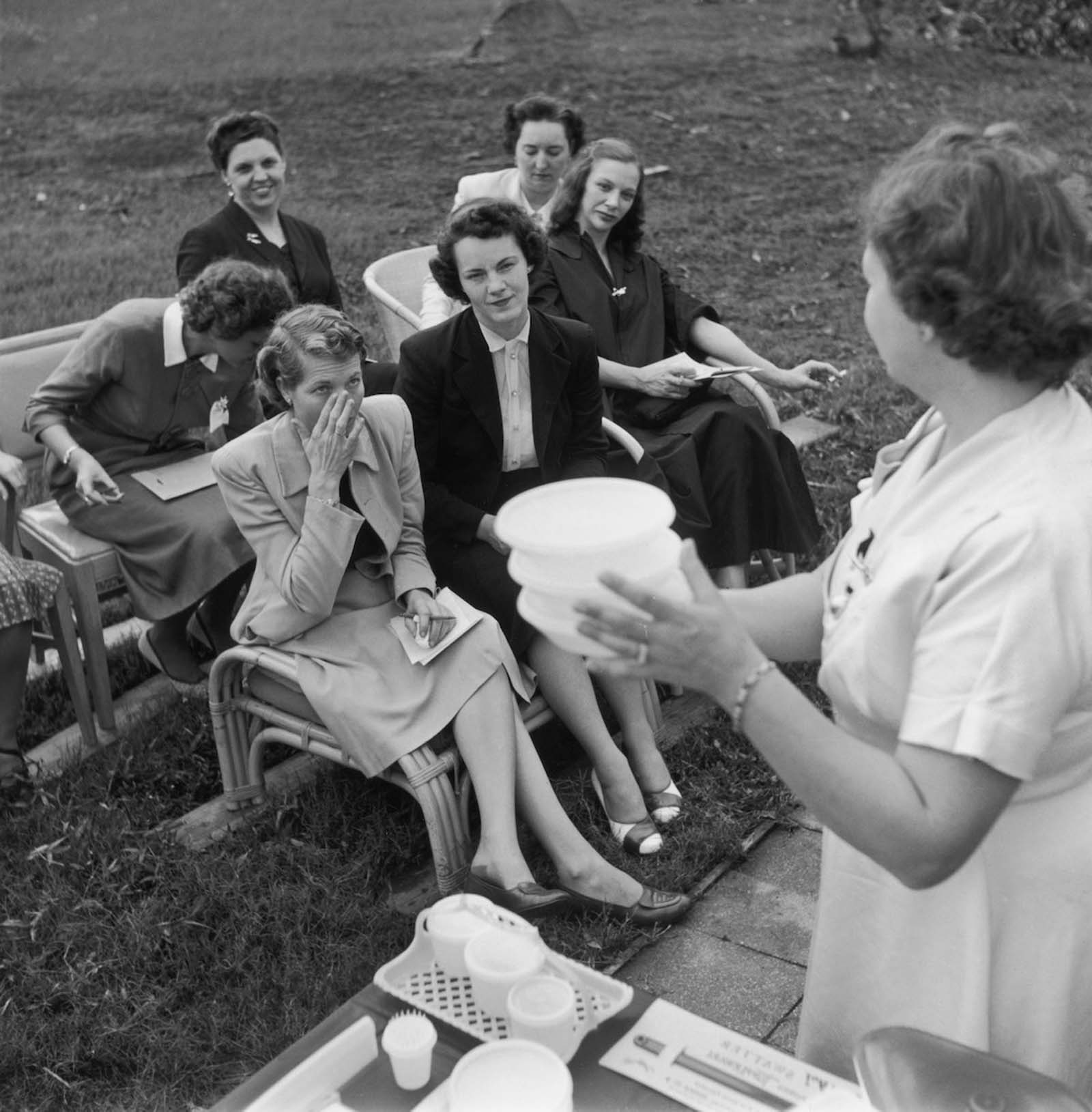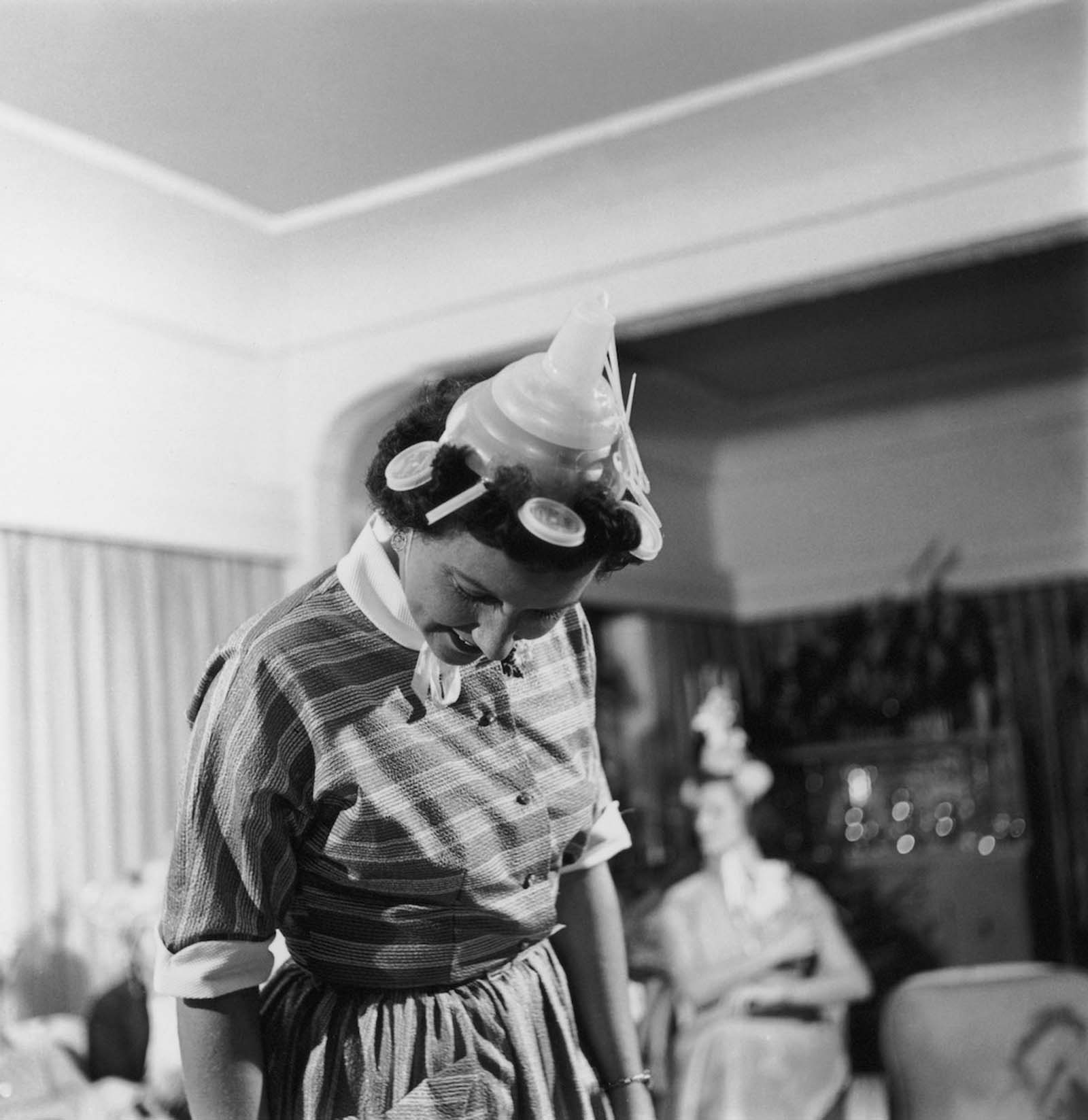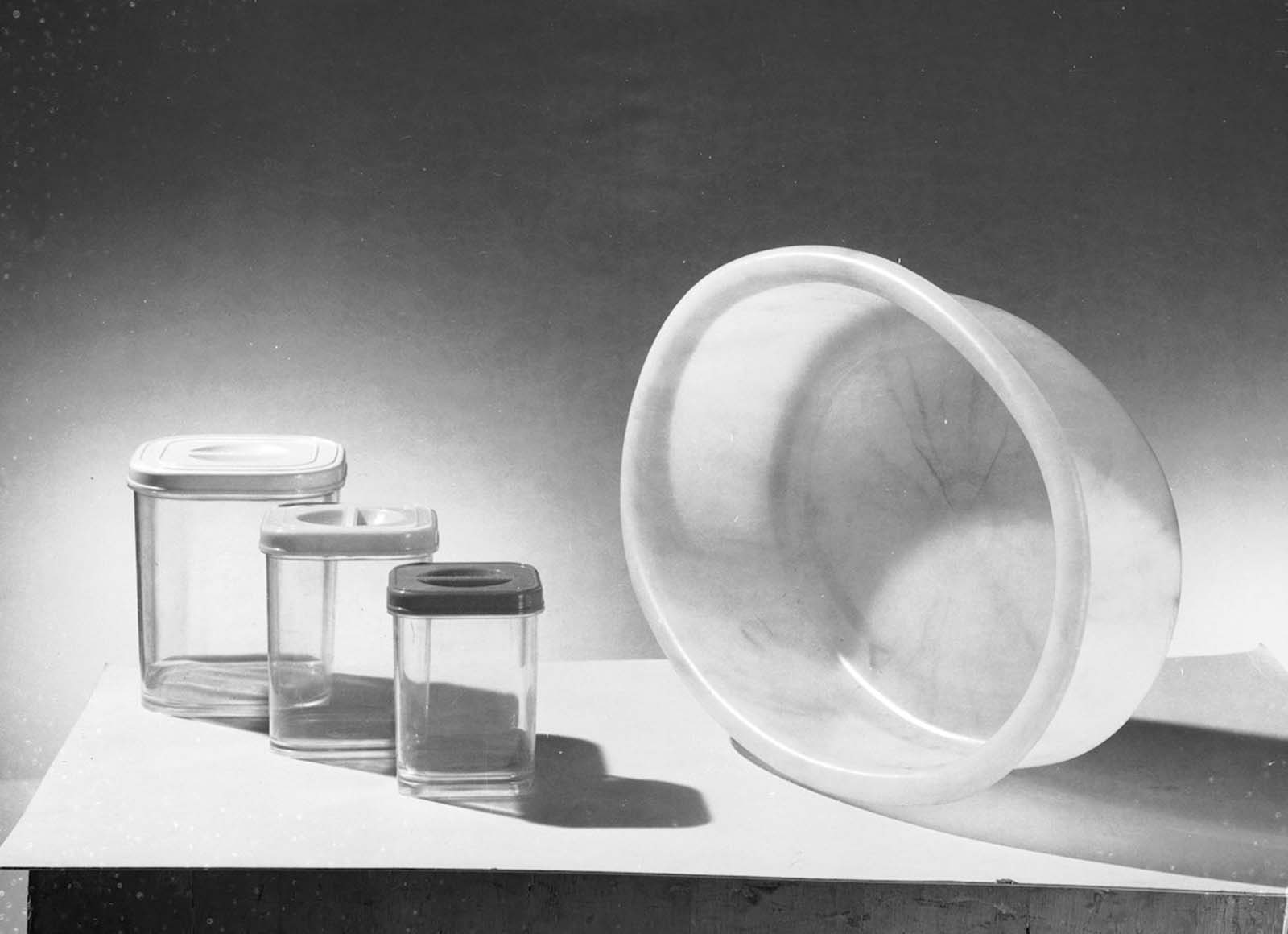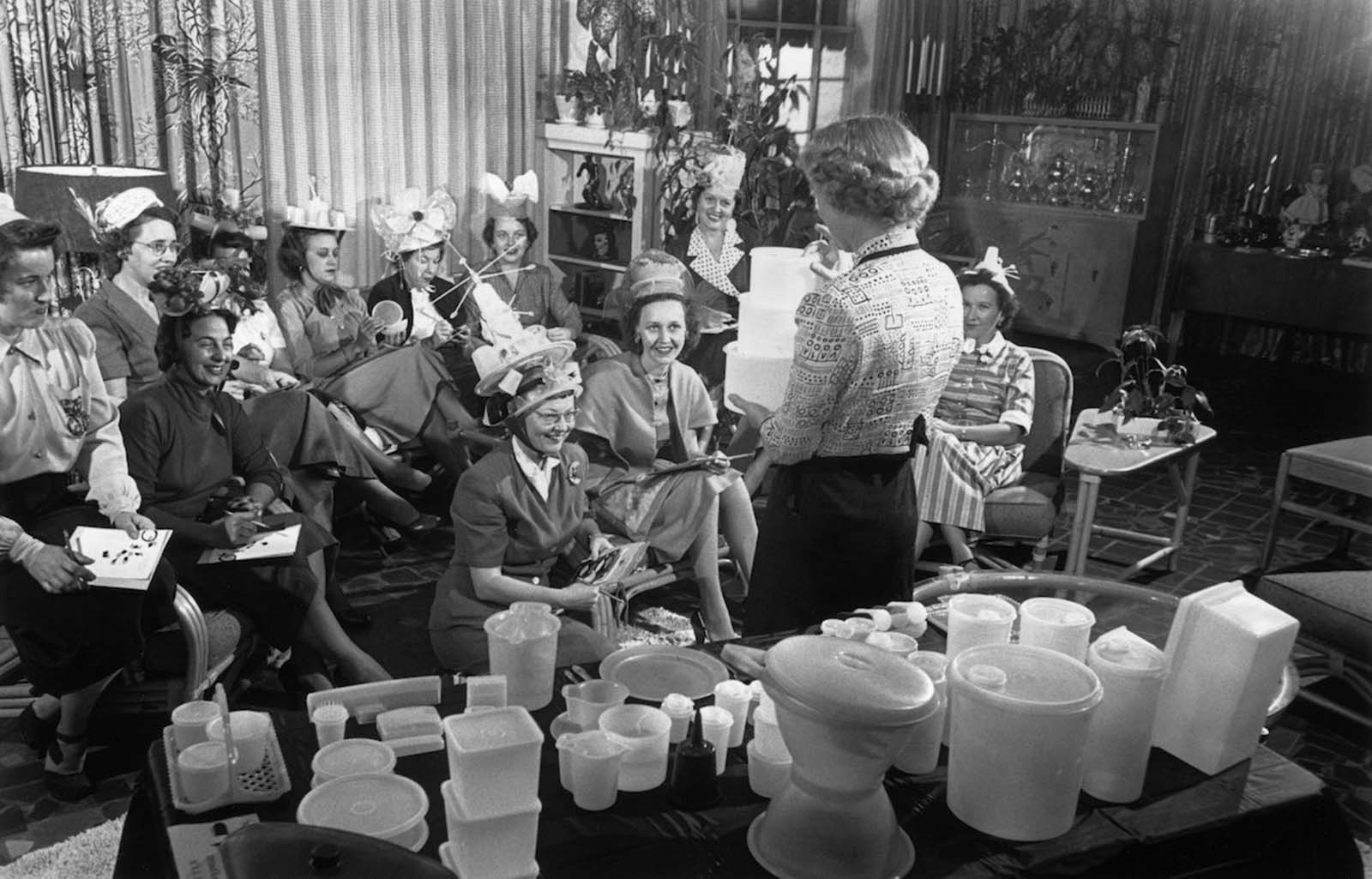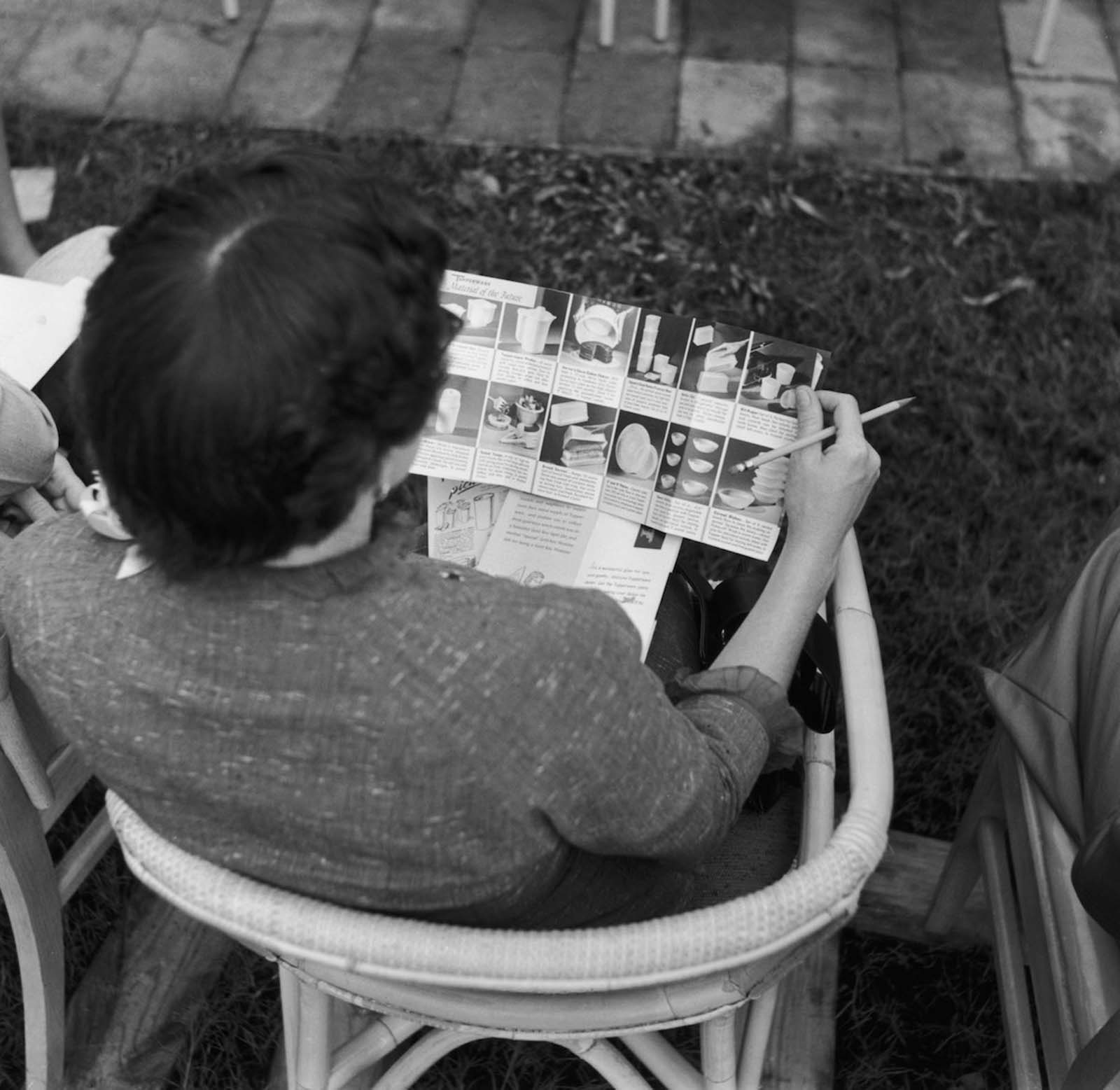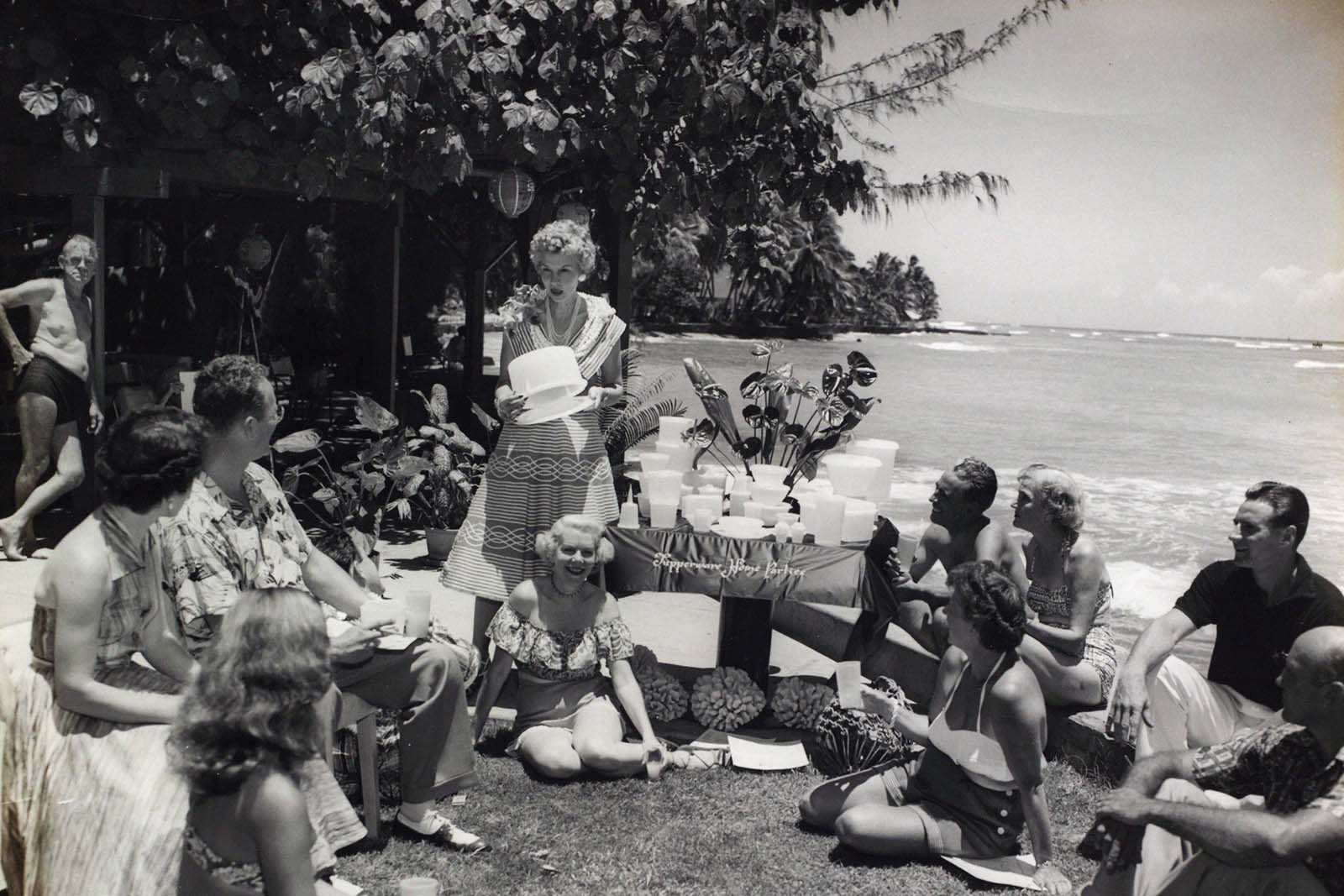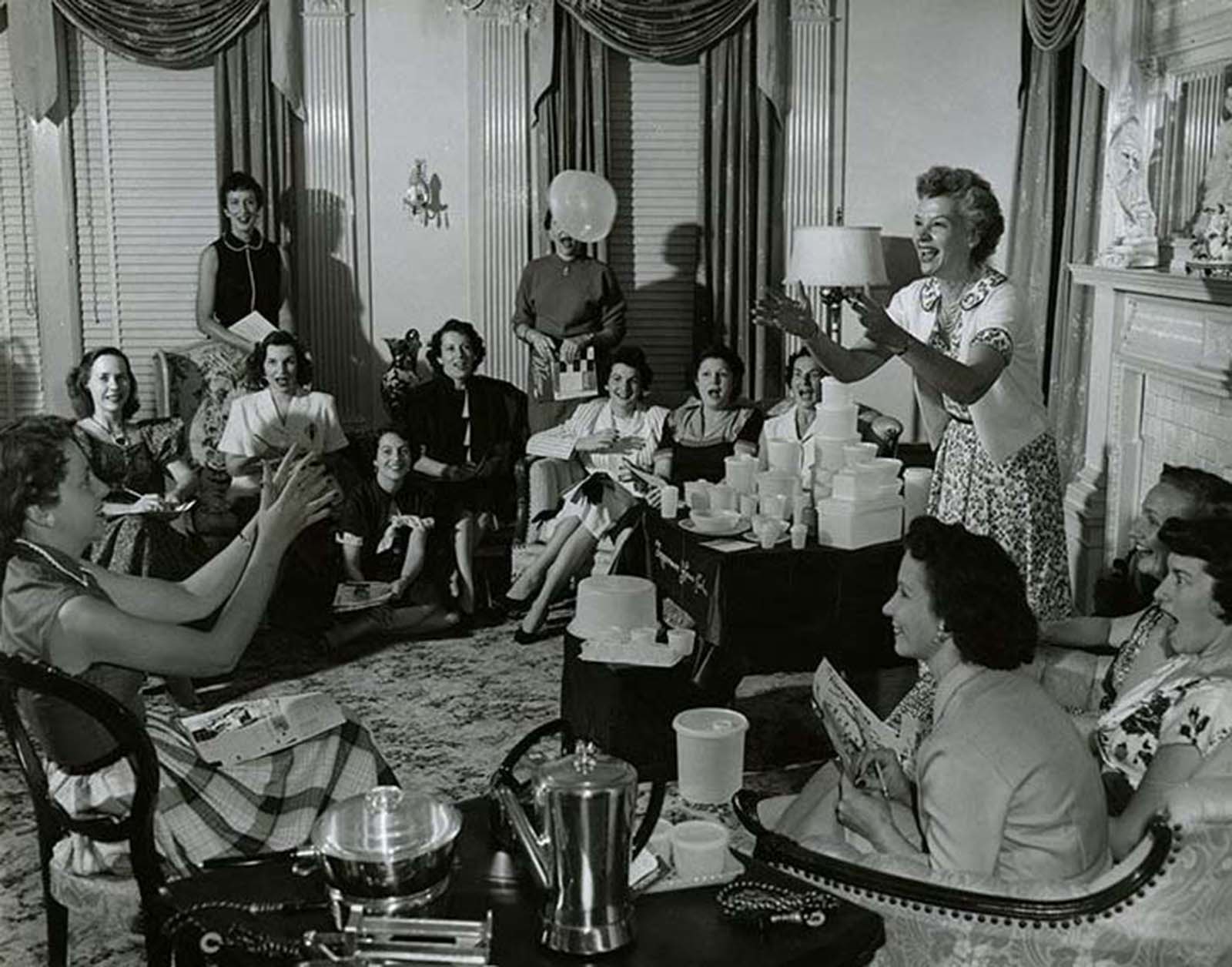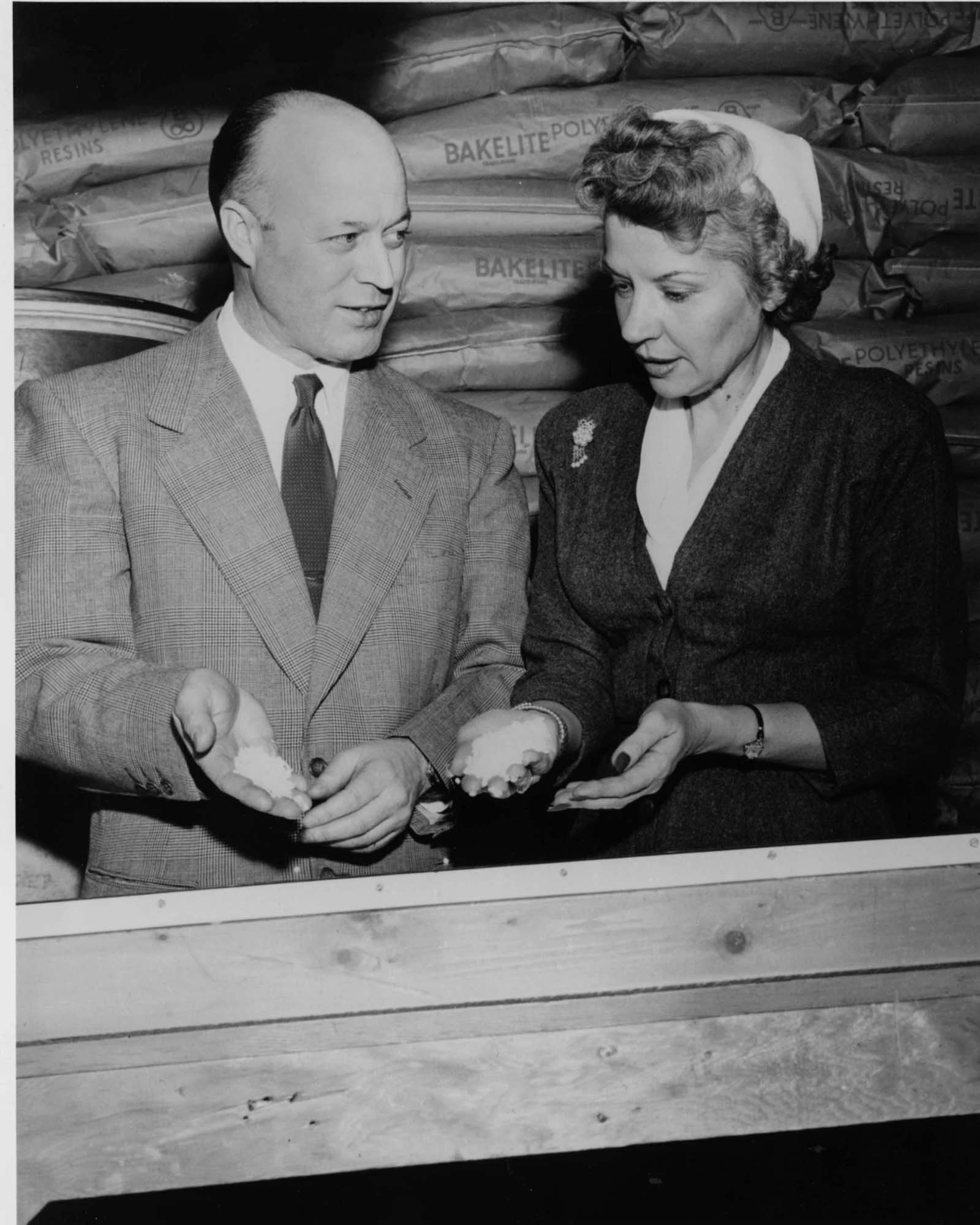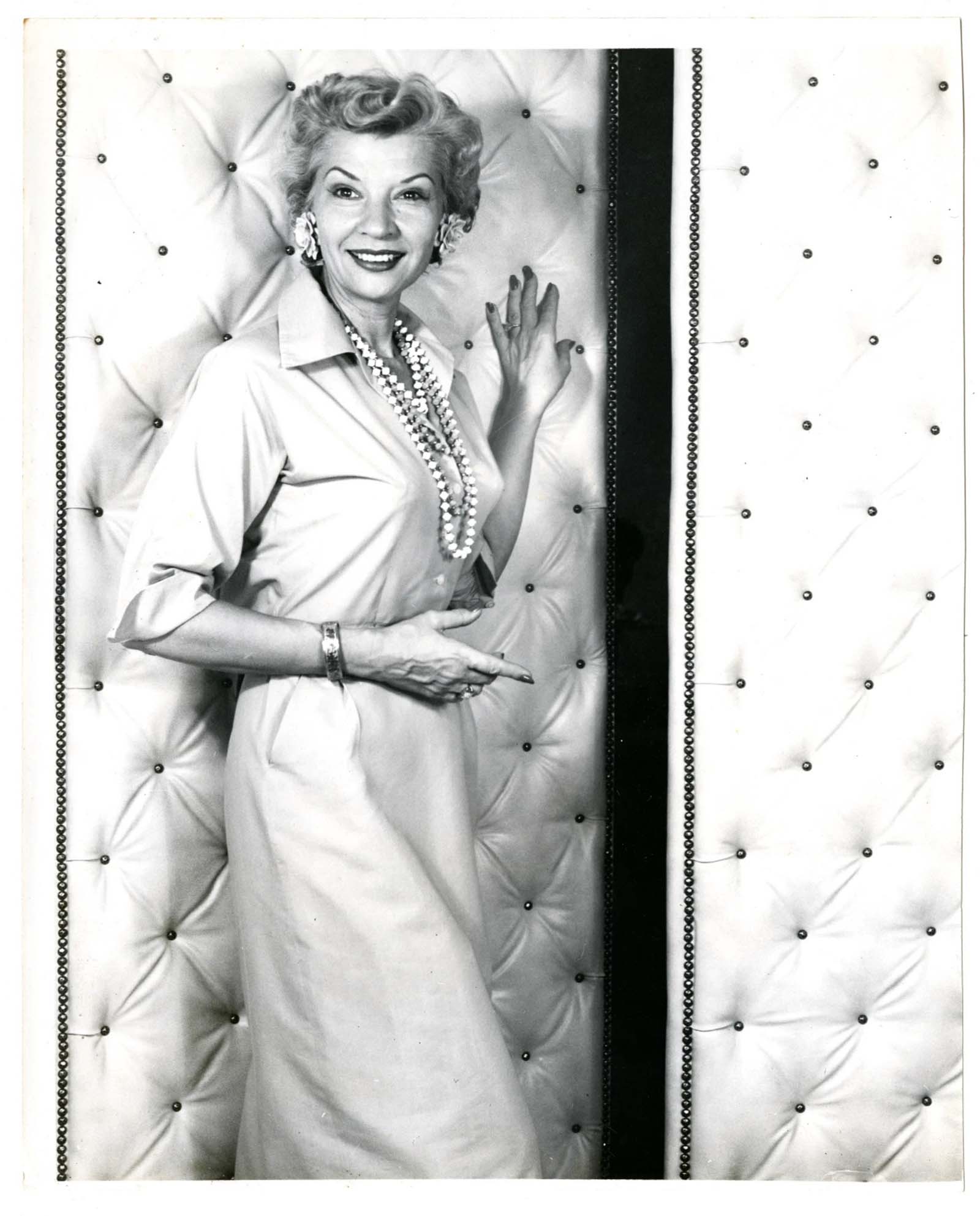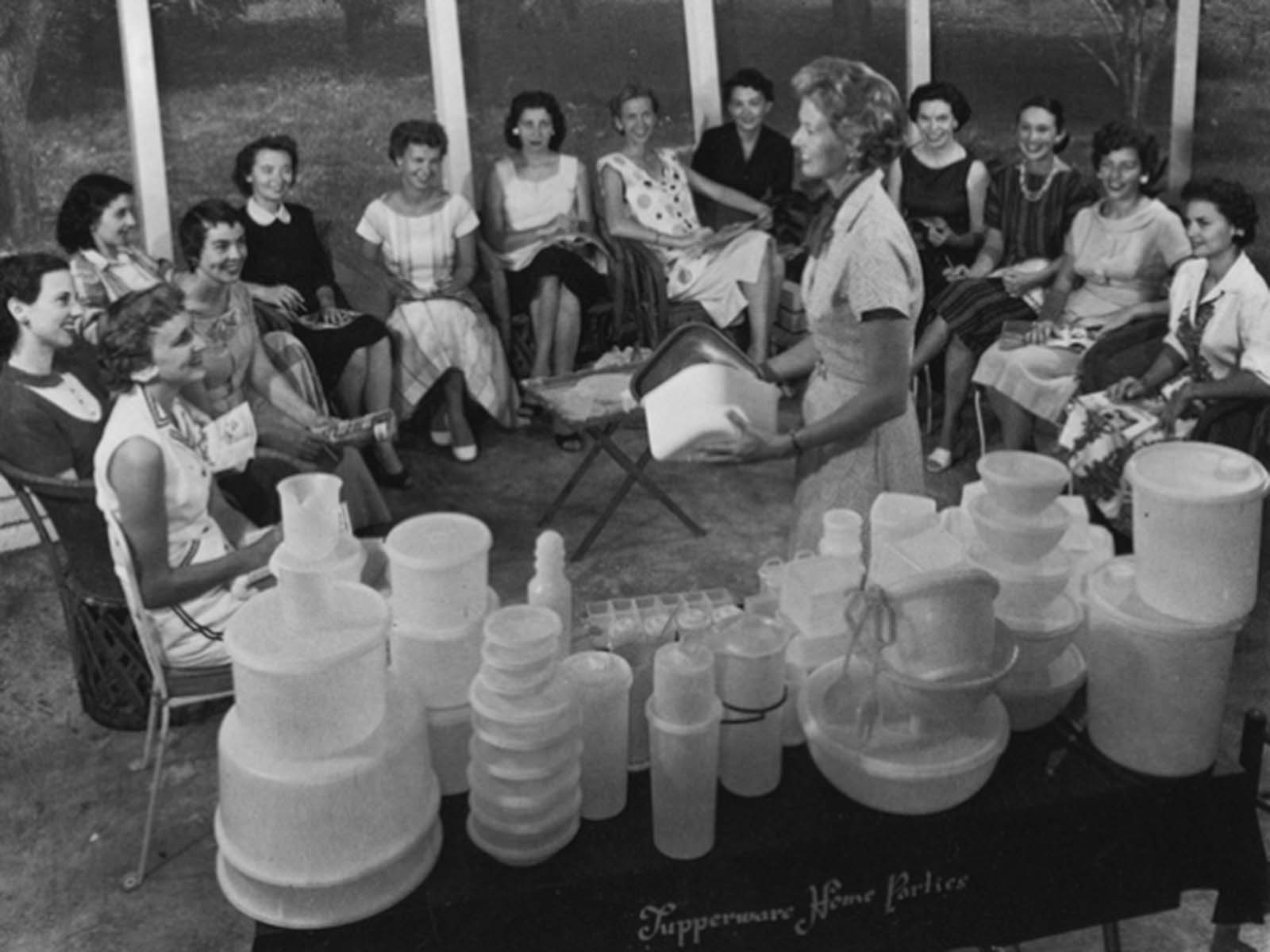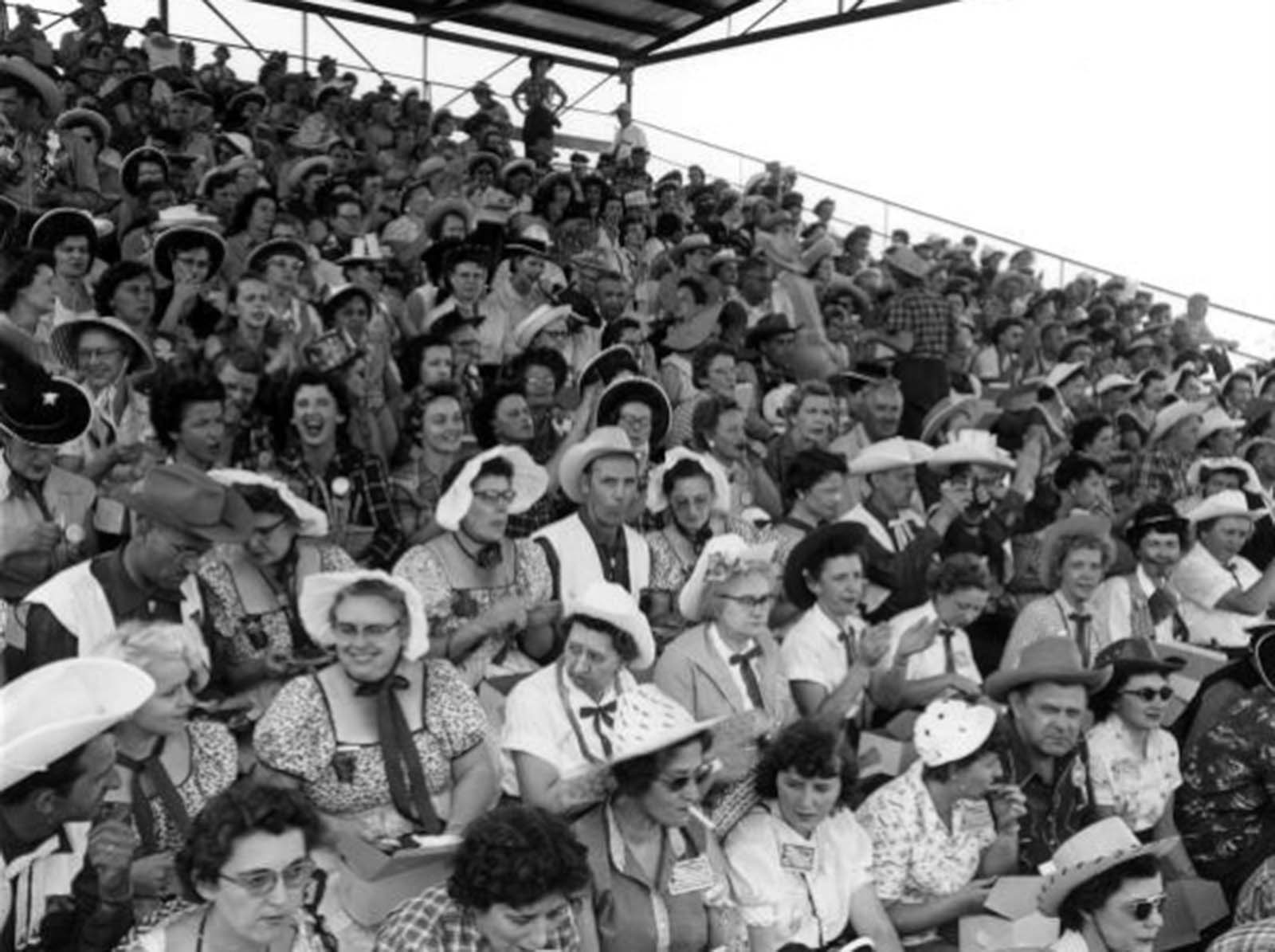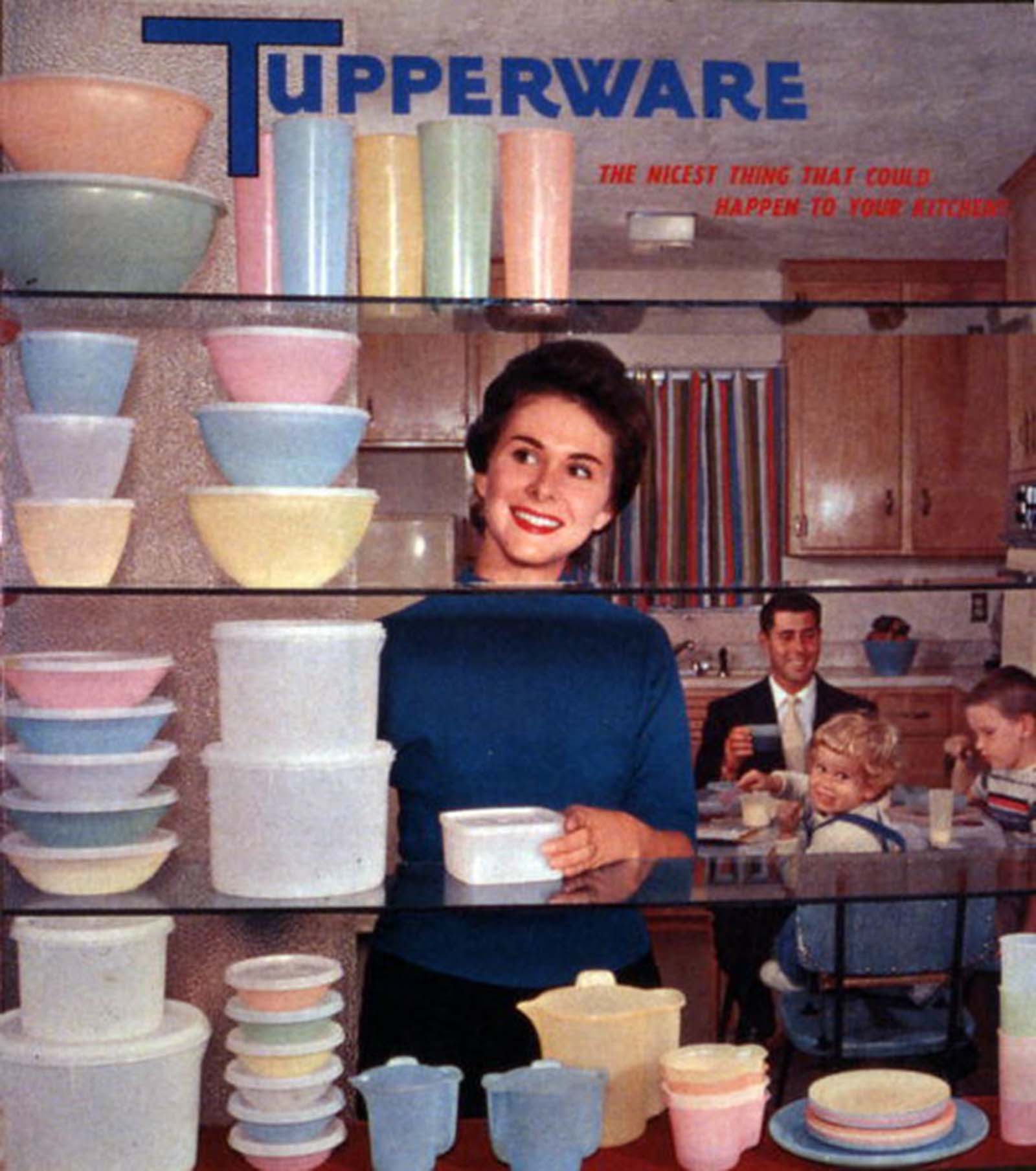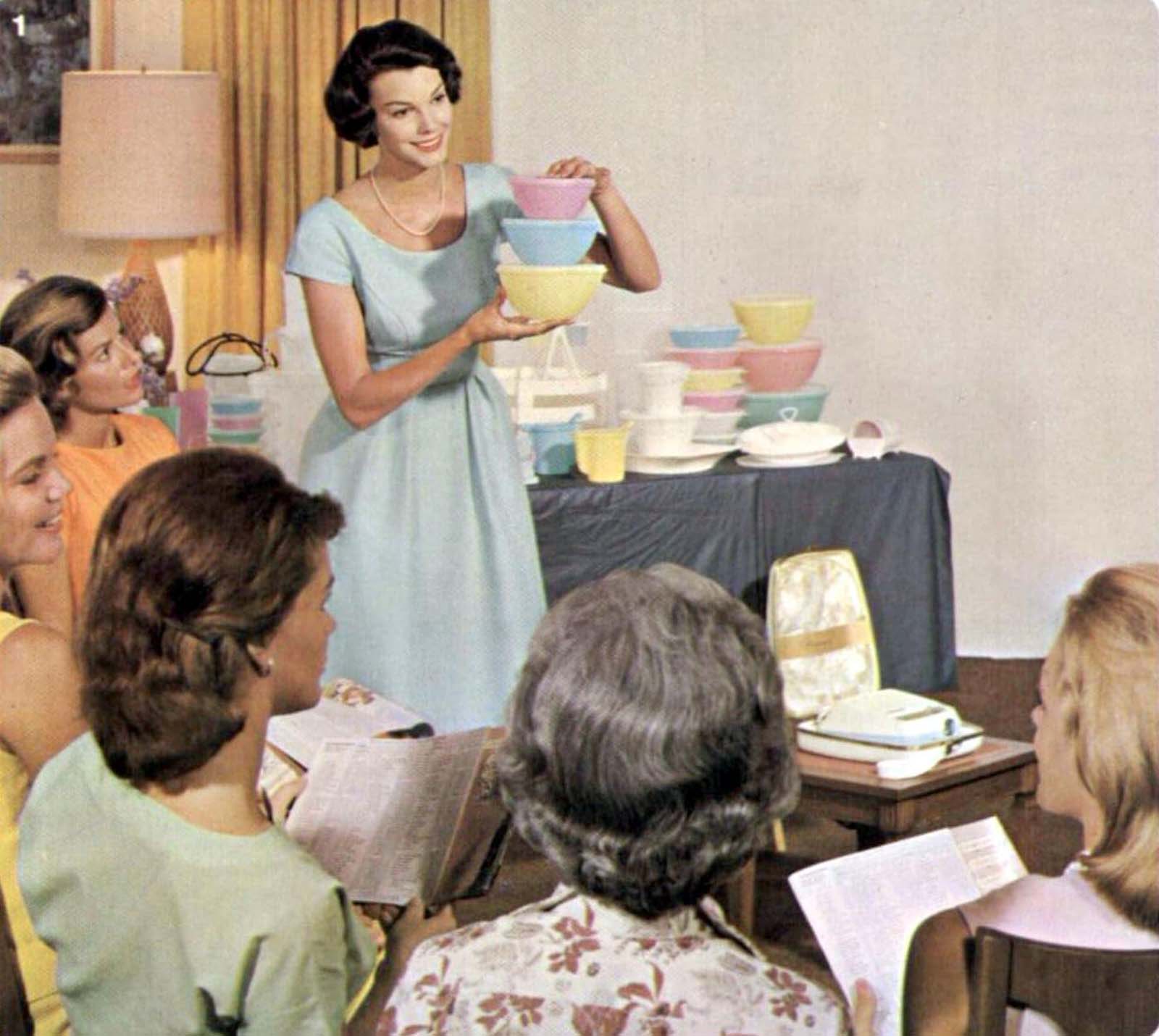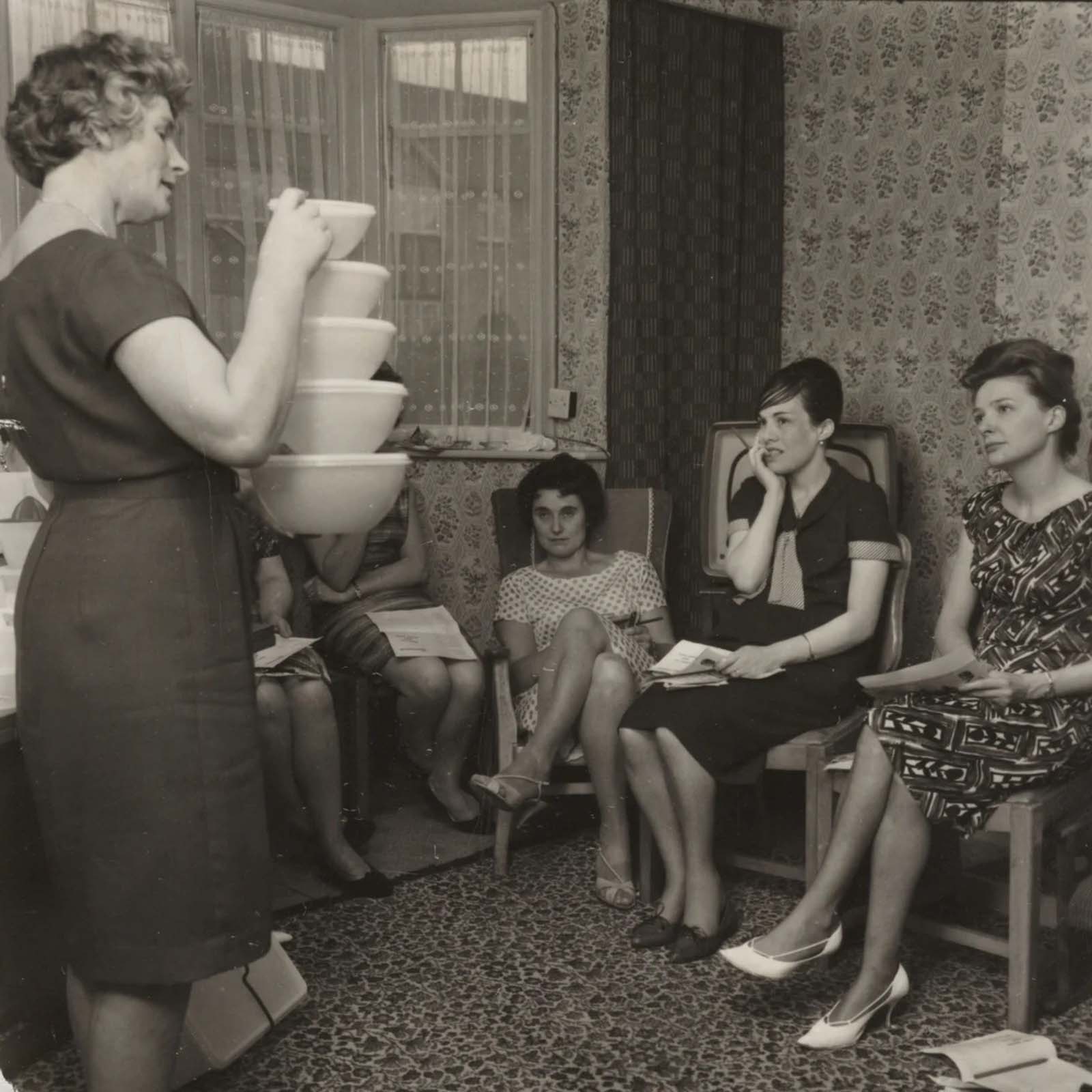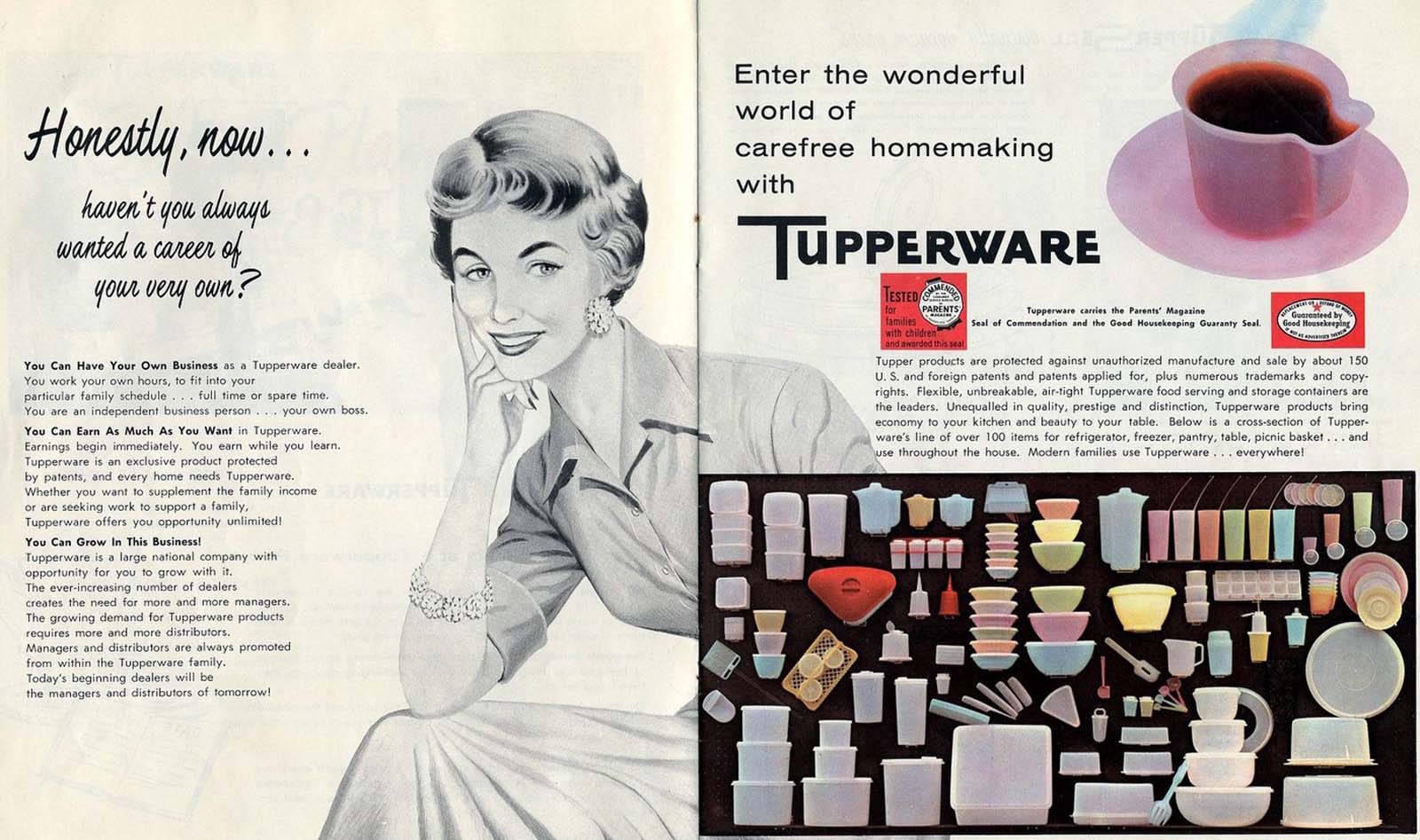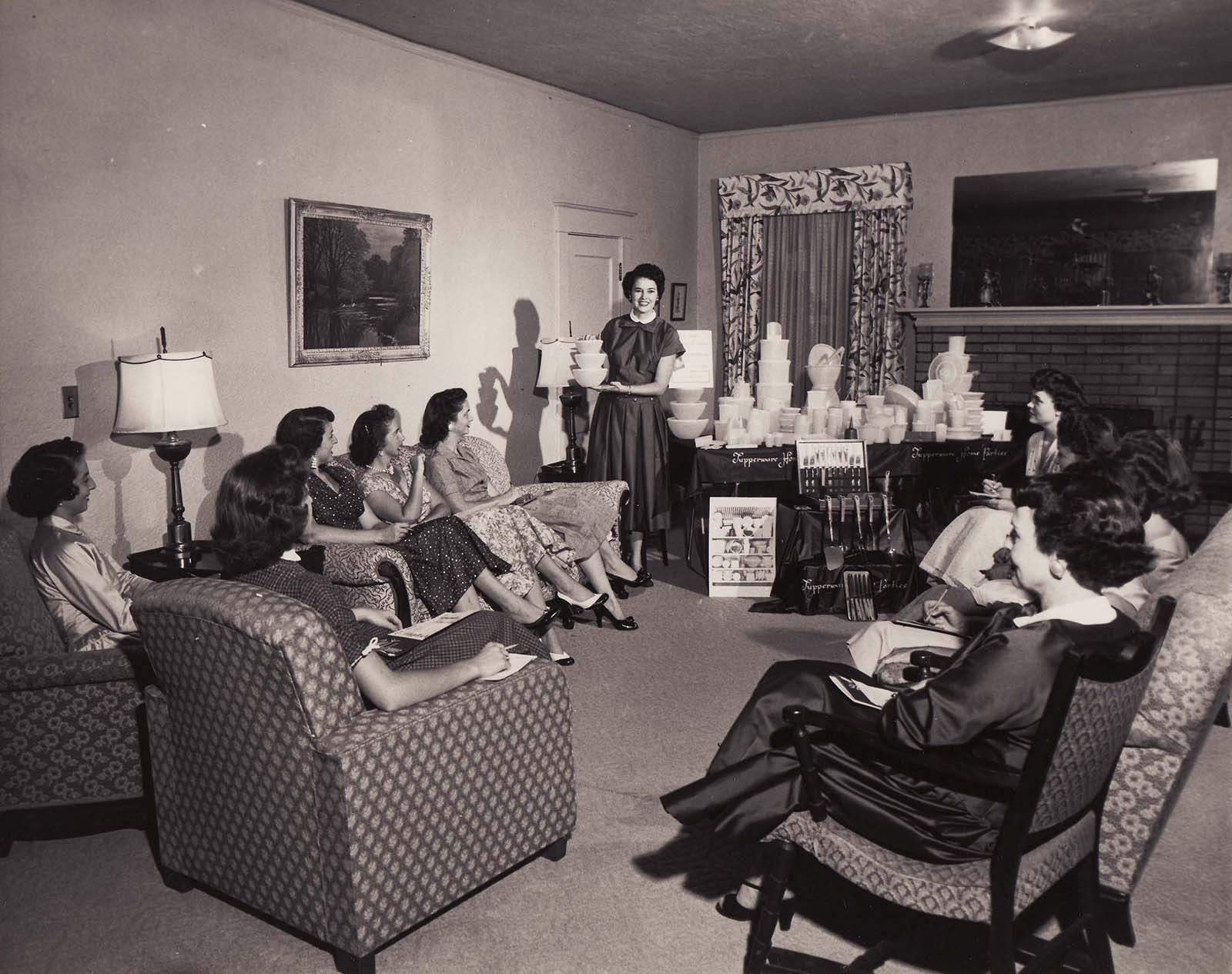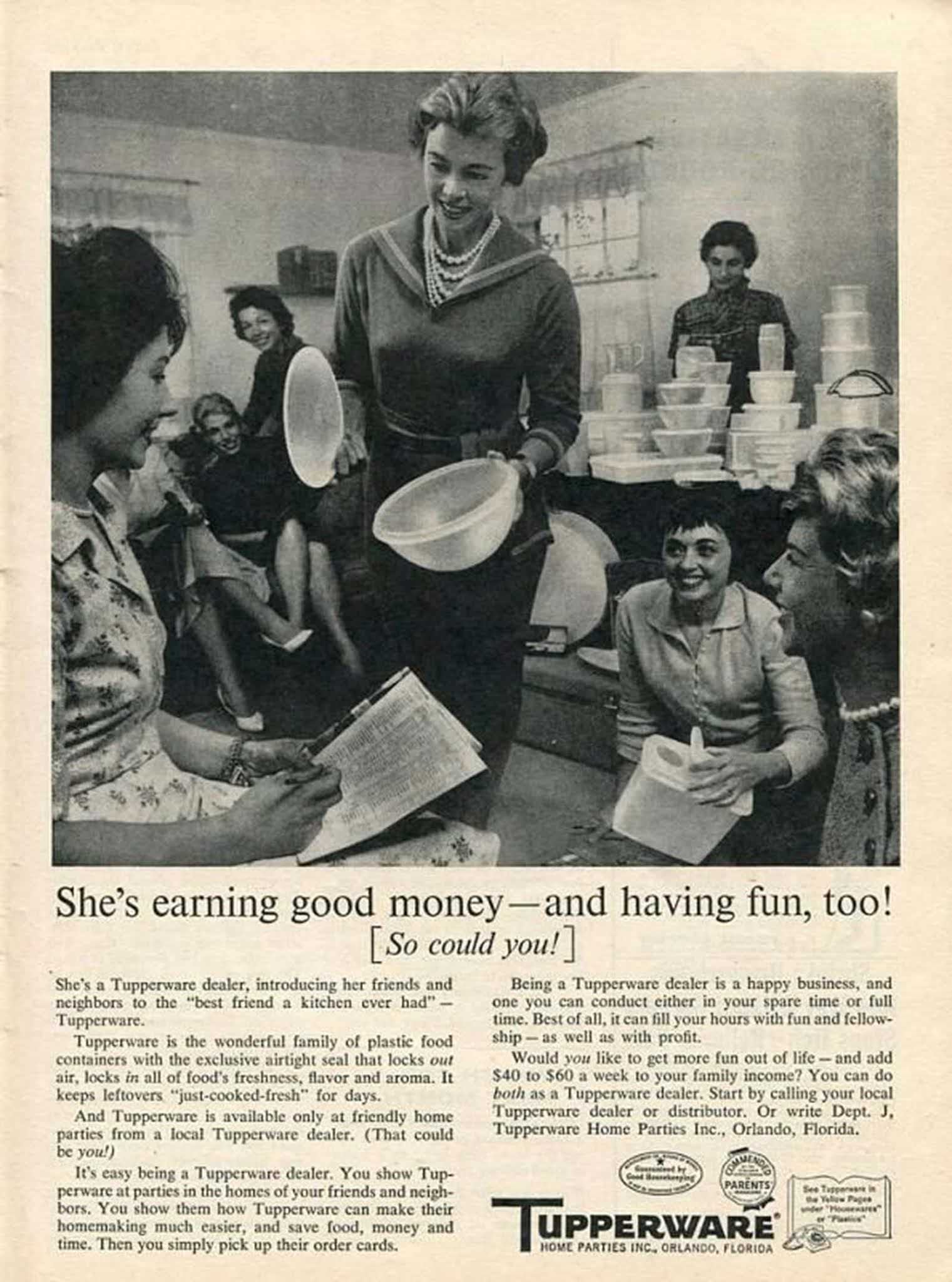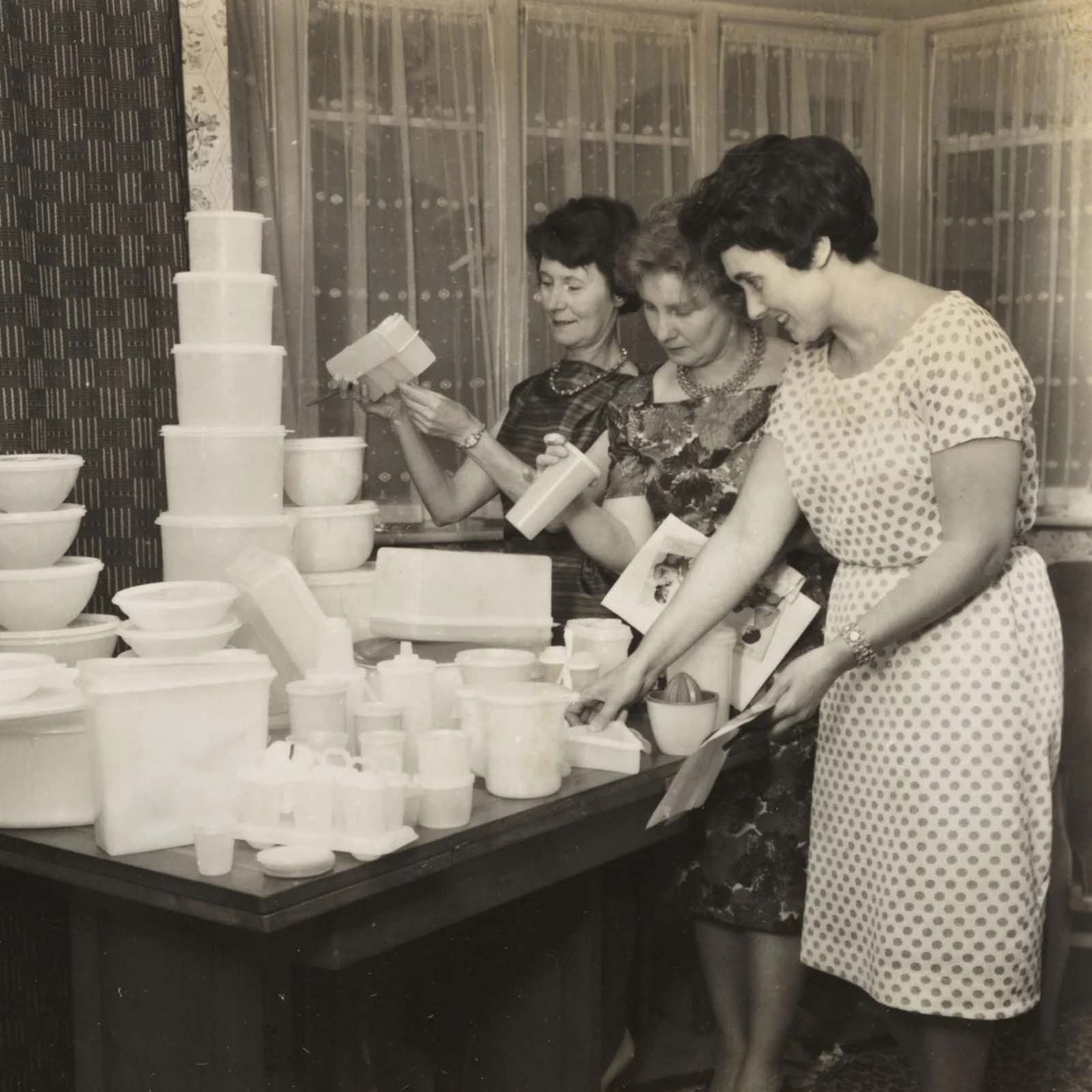In 1942, invent and designer Earl Silas Tupper invented the first Tupperware from a refined polyethylene version. He called his invention ‘Material of the Future’. Tupper believed that his labor-saving flexible and lightweight containers would significantly reduce the spills, odors in the refrigerators, and waste leftovers. He marketed his product as ‘Fine Art for 39 Cents’, but the American housewives remained unimpressed by his creation. Department stores and magazines promoted his product as the answer to the modern homemaker’s dreams, but the sales dwindled.
In the 1950s, a middle-aged single mother, Brownie Wise from Detroit, found a unique way to sell Tupperware products. She organized a Tupperware Party in her house where women gathered, and they bought the products. Wise also worked as a door-to-door salesperson to pay her young son’s medical bills. Earl Tupper was astonished by her idea and sales figures. He agreed to withdraw Tupperware products from department stores and retail outlets and focused on Tupperware parties, and they became the company’s only form of distribution. Wise was awarded the vice president’s position leading the newly formed Tupperware Home Parties Incorporated (THP). She began her amazing transition from housewife to leader of a multimillion-dollar enterprise, appearing in women’s magazines and business journals across the land.
Earl Tupper continued to expand his product range, inventing cocktail shakers, dishes, ketchup funnels, and cake domes and established several factories across the country. Brownie Wise recruited Tupperware dealers in droves, and she became the first woman to grace the front cover of Business Week with her adage, “If we build the people, they’ll build the business.”


